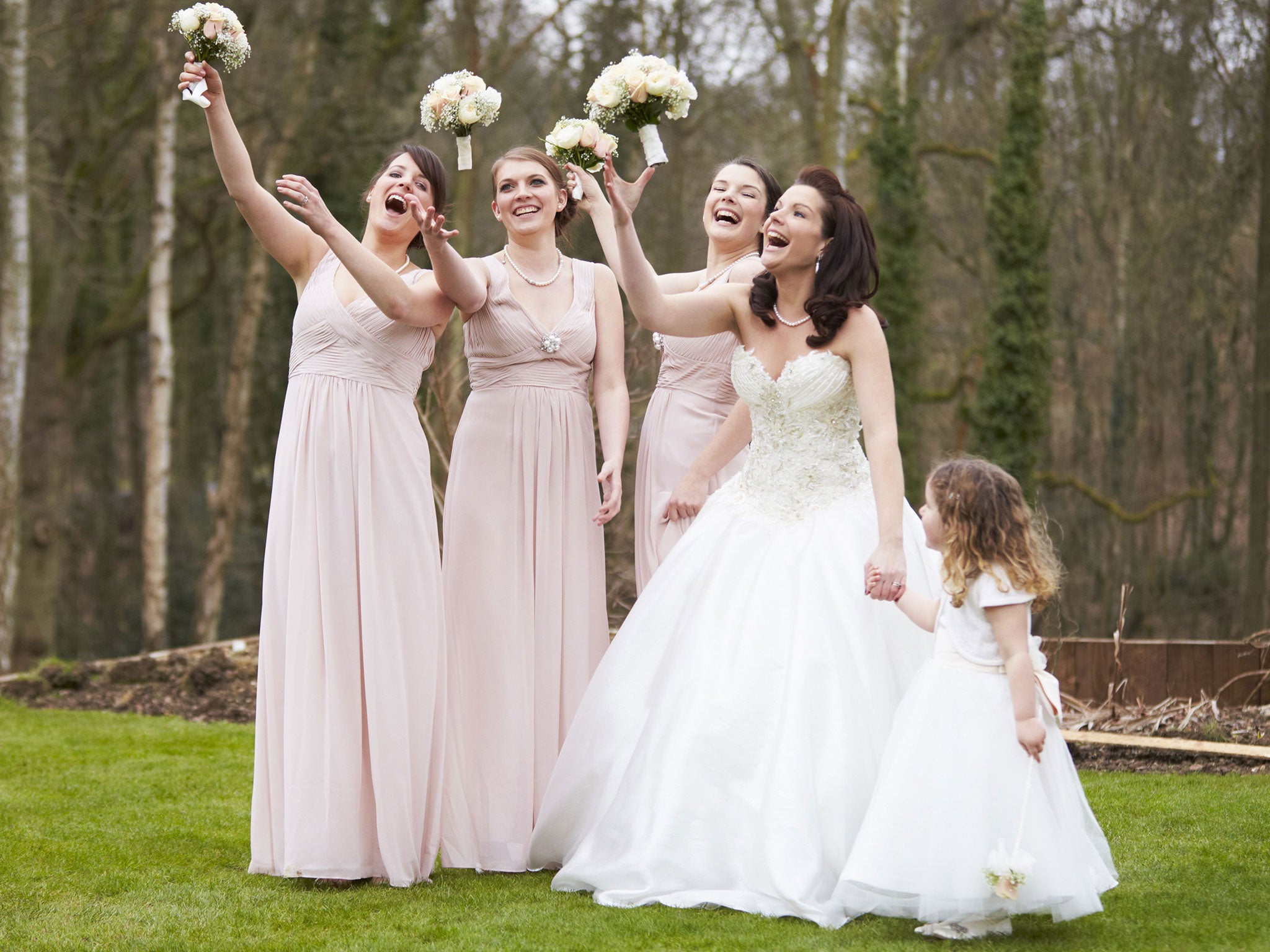Why do bridesmaids all dress the same?
The Victorian era is to blame...

Your support helps us to tell the story
From reproductive rights to climate change to Big Tech, The Independent is on the ground when the story is developing. Whether it's investigating the financials of Elon Musk's pro-Trump PAC or producing our latest documentary, 'The A Word', which shines a light on the American women fighting for reproductive rights, we know how important it is to parse out the facts from the messaging.
At such a critical moment in US history, we need reporters on the ground. Your donation allows us to keep sending journalists to speak to both sides of the story.
The Independent is trusted by Americans across the entire political spectrum. And unlike many other quality news outlets, we choose not to lock Americans out of our reporting and analysis with paywalls. We believe quality journalism should be available to everyone, paid for by those who can afford it.
Your support makes all the difference.The plumes of taffeta, unimaginatve block-colours and frumpy chiffon that make up most bridesmaid dresses mean there is plenty of room for disaster, which is only amplified by the fact that each woman dresses the same.
So, where does the tradition of bridesmaid wearing near-identical gowns originate?
One theory that often circulates online is that it is a hangover from Ancient Rome: a culture that also valued monogamy.
Some believe that the bridesmaids were essentially bait for evil spirits and jilted ex-lovers who were attracted by the spectacle of the wedding party and sought to wreak havoc. A group of women dressed the same distract the wrong-doers, and enable the couple to wed without interruption, Mental Floss reported.
But Dr Liz Gloyn, lecturer in Classic and Royal Holloway, University of London, told The Independent that there is no link between Republican or Imperial Roman wedding traditions and bridesmaids dressing the same today.
She explained this incorrect idea likely stems from a particular form of Roman marriage called, confarreatio which required ten witnesses.
“[Confarreatio] did require ten witnesses, but the sources say nothing about the need for those witnesses to be dressed the same, and they'd all have been men anyway,” said Dr Gloyn.
But she added: "A Roman bride would have had a group of female attendants with her as she went from her house to her husband's, and there was a particular costume that the bride wore."
Instead, it is more likely that the veil is inspired by the Roman era, she said.
"[The bride] wore a deep yellow veil which may have been meant to act as a good omen, and marked her entry into society as a married woman who was now expected to cover her head in public."
Identical bridesmaids dresses in the West are likely influenced by Court etiquette and Royal weddings dating back to Queen Victoria’s ceremony in 1841, explained Lou Taylor, Professor of Dress and Textile History at the University of Brighton.
“Such occasions provided, and still provide, the opportunity for a public display of Royal or Court power, and support for Royalty, especially via the wedding procession through the streets of the capital city to Westminster Abbey.”
Dating back to medieval times, Royal weddings were, and still are, staged similarly to Royal funerals as carefully organised, public displays of support for the monarchy. For a Royal funeral, the Lord Chamberlain prescribed mourning attire for those part of the ceremony - even down to the type of fabric used.
Similarly, Royal weddings were a public display of support for the new couple.
“[Queen Victoria] had 12 bridesmaids, wearing white off the shoulder fashionable 1840 dresses, with full-blown artificial roses decorating their hair behind their right ears.
“They were all the eldest daughters of the highest strata of the peerage. She gave them each a brooch, an eagle (Prince Albert's crest) of turquoise and pearls," said Professor Taylor.
“It is my belief that by regulating the bridesmaids formally into exactly the same garments, there was no room for any of them to try and outdo each other, let alone the bride, through the use of grander fabric, grander jewellery."
Uniform bridesmaids were also a sign of the Royal family's authority, and the subservience of the guests, she said.
Join our commenting forum
Join thought-provoking conversations, follow other Independent readers and see their replies
Comments